CED and East Georgia College Campus Design: Creating a Master Plan for the College in the Pines
Think of the special places on the UGA campus: Herty Field, the Founders Memorial Garden, Brooks Drive, or the North Campus quadrangle, to name a few. All of them hold meaning for us in addition to simply serving as locations that occupy the space between buildings. Yes, we walk often without noticing them to classes, the library, special events, or the car or bus stop, but how did they come to be?
Campus design has long been a staple of the landscape architecture discipline. Creating memorable spaces that people can move through easily, and be inspired along the way, is an essential part of the learning experience. Knowing where we are, literally, can help us develop lasting relationships in our higher education careers. Landscape plantings, pathways, handicap accessibility, stormwater runoff, delivery routes, as well as long views to the stadium or downtown, or the surrounding Piedmont, all enrich our experience of the place of UGA. Landscape architects actually design these experiences.
For the past 18 months, the College of Environment and Design (CED) has been engaged in the campus design of East Georgia State College (EGSC) in Swainsboro. Sixty-five students in three studio classes addressed the needs for a masterplan of the growing 249-acre college in southeast Georgia. Professors Danny Sniff, Georgia Harrison Hall, Donnie Longenecker, and Alfie Vick each dedicated semesters in their design classes to East Georgia State College at the behest of the school’s president, Bob Boehmer. CED PhD student Leslie Palacios served as a facilitator for this project, collecting information on the history of the area and the history of EGSC specifically, and pulled together GIS data, old maps, and census data that would inform the class design efforts.
East Georgia State College is a liberal arts institution that works with traditional and non-traditional students, encouraging them to continue on their education paths after highschool. Established in the 1970s as a two-year college, EGSC now offers a two-year post-secondary degree and a four-year baccalaureate. There are approximately 2000 students, most of them commuters from a ten county surrounding area. Four hundred students live on campus, and the school hopes to increase that number in the coming years.
“Students from the College of Environment and Design developed an outstanding and creative master plan over the course of three semesters. Both practical and comprehensive, the plan provides a vision for the future of EGSC’s physical campus and is consistent with the history and unique mission of the college. Having this master plan will enable the college to grow its physical campus in a responsive and sustainable manner,” explains Bob Boehmer.
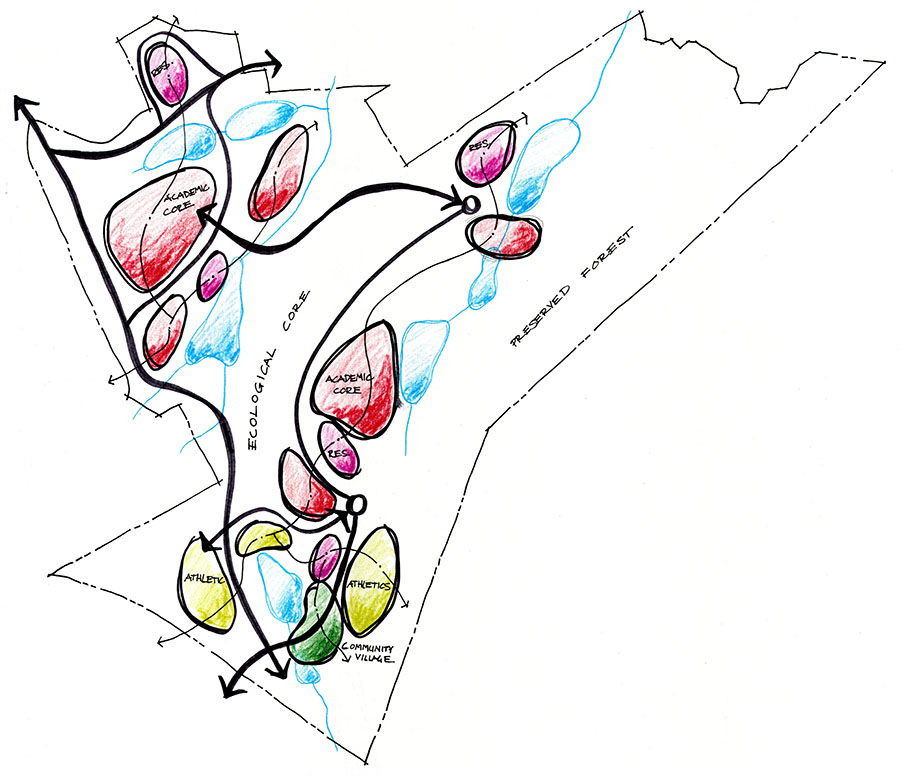
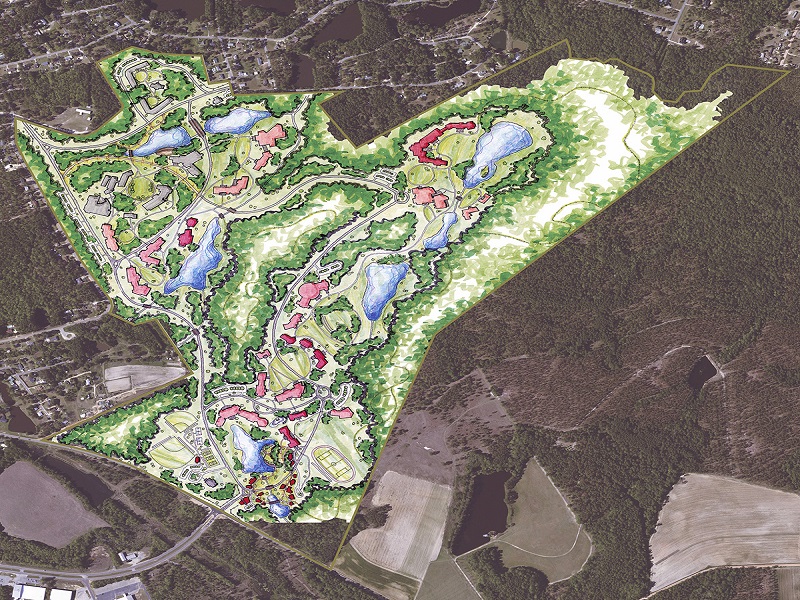
Georgia colleges and universities have as part of their accreditation process the requirement of a masterplan that will shape the educational community as it changes. Renovations and expansions that respond to evolving demographics and general growth call for a detailed understanding of each campus’s needs, history, and mission. These master plans serve as a road map to meet new requirements and a growing population. Throughout the process of the design for the campus, UGA CED students engaged with EGSC’s president, board members, and students, using feedback to create additional phases of the masterplan.
“During two site visits, my classmates and I informally interacted with a number of EGSC students. Some of them were curious about the purpose behind our presence on their campus. This was a chance to ask them what they liked most about their facilities and we discovered they were especially interested in having larger community features such as an amphitheater and more bike trails,” explains MLA student Alex Yaun.
Under the direction of Alfie Vick, graduate students used the Swainsboro campus to participate in the Environmental Protection Agency’s 2016 Campus Rainworks Challenge. In their designs Vick’s students concentrated on protecting and highlighting the unique ecological aspects of the campus, including its longleaf pine forest, the creeks and ponds of the area and gopher tortoise habitat (a team of Master of Landscape Architecture student led by Danielle Schwartz won an honorable mention in the competition.) Students collected data on campus drainage, soil infiltration, topography, tree canopy, land use, and ecological resources and used this information in their designs.
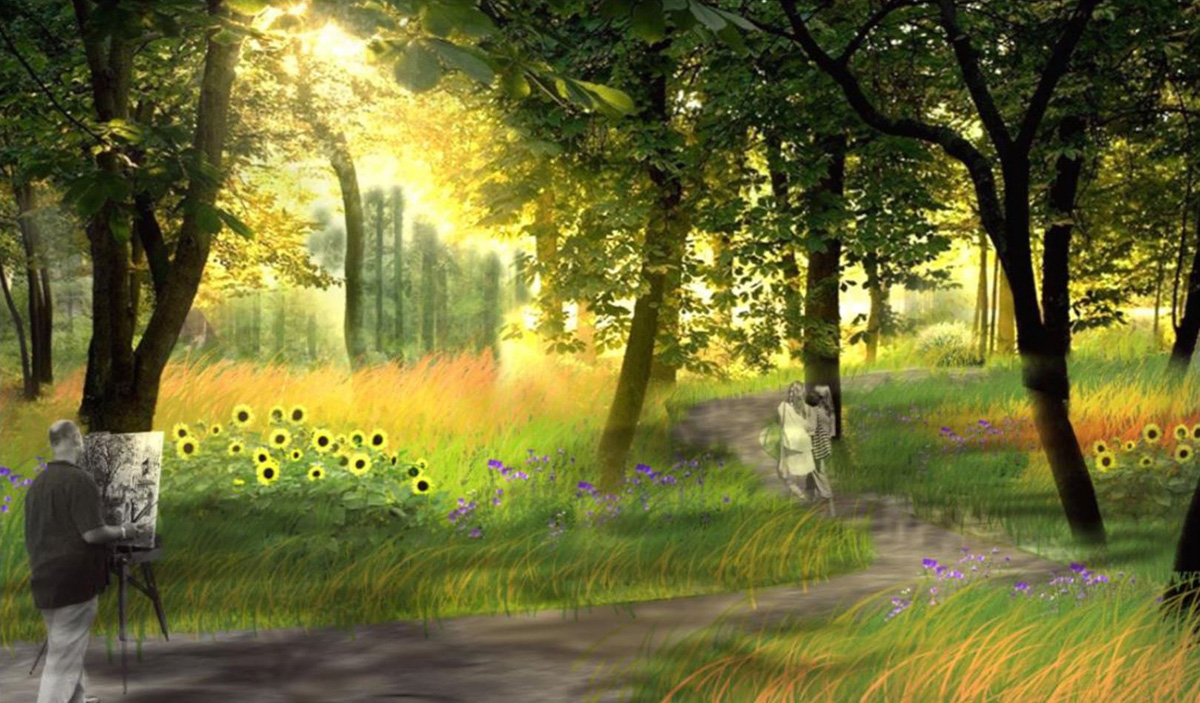
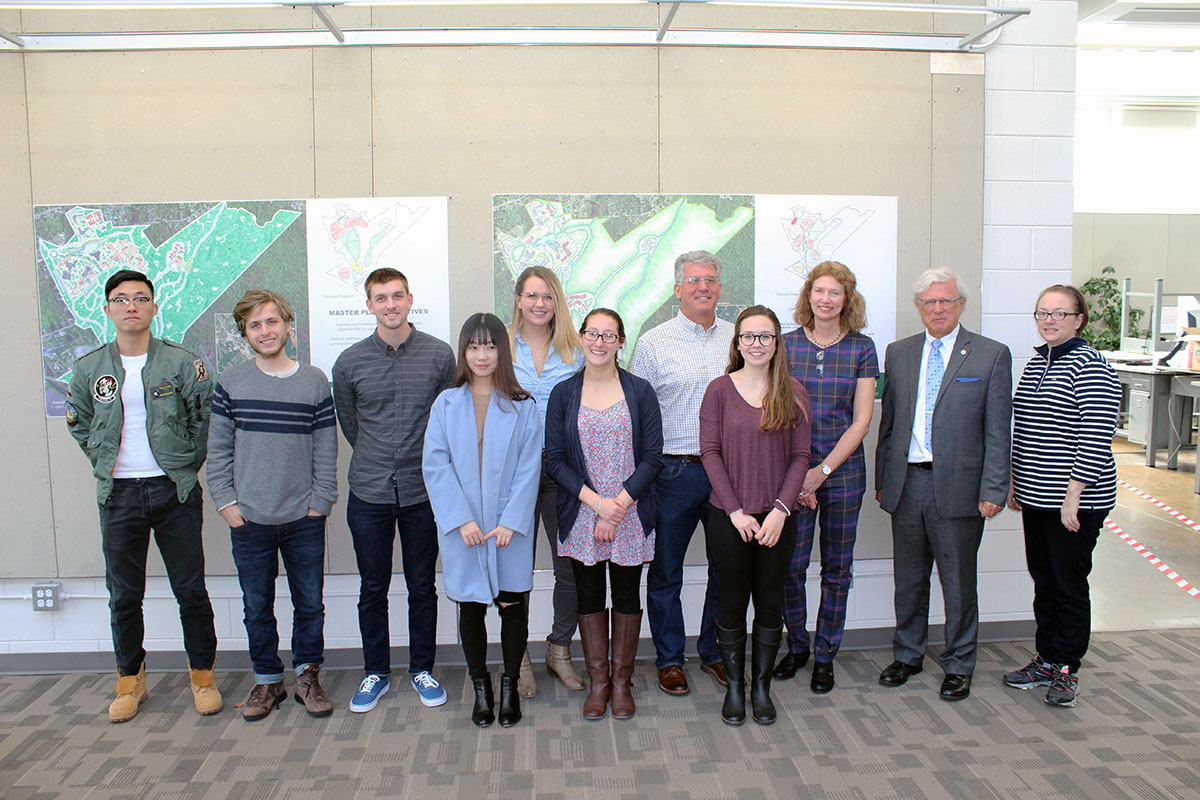

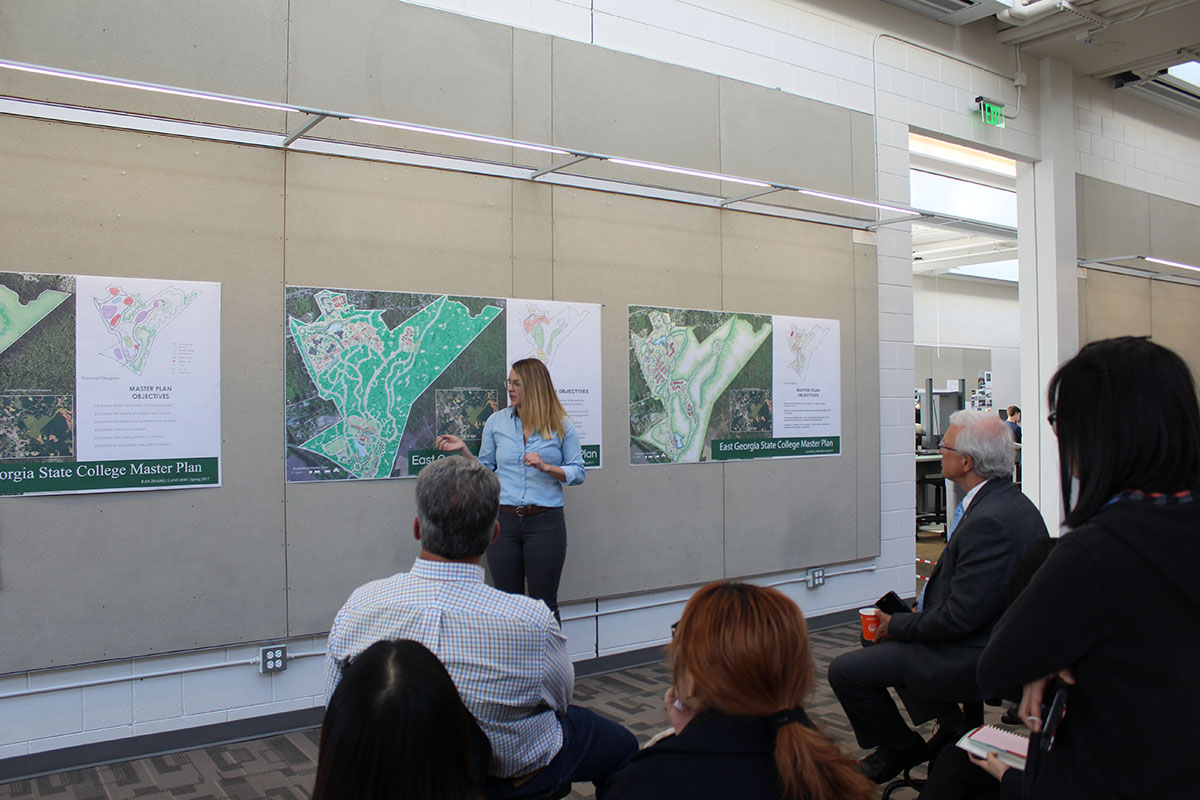
To conclude the project, the undergraduate Urban Design studio, taught by Donnie Longenecker, tackled specific aspects for the campus design, addressing potential landscaping, athletic and recreation venues and inviting outdoor spaces that would enhance the college experience for the EGSC student body and staff. Longenecker’s students made a survey of the campus using levels, rods, and pin flags and then created a topographical map of the central part of the campus using AutoCAD civil engineering software.


"I think this was one of the most valuable lessons our students got: learning to create an actual survey in the field. They came back to Athens and realized they hadn’t actually gotten all the detailed information they needed, but that lesson was probably as valuable as what they did get,” says Longenecker. He also saw value in having the BLA students present to a real client.

Again, the experience was a valuable for CED student Alex Yaun: “Because colleges are the intellectual centers that mold the future of our country, their campuses should reflect the essence of their surroundings and encourage ecologically responsible lifestyles. Experiencing pedestrian ‘green streets,’ effective storm water management, and habitat sanctuaries are some of the most valuable aspects of college campus life.”

